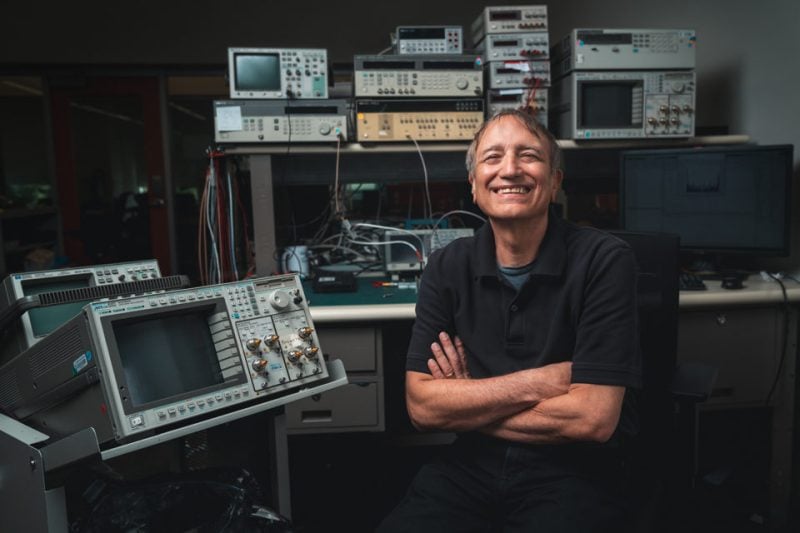On March 18, the Association of Computing Machinery (ACM) awarded computer science and electrical engineering professor Patrick M. “Pat” Hanrahan the prestigious Turing Award for his work on 3D computer graphics and computer-generated imagery. The award, often called the Nobel Prize for computer science, has only been given to a researcher in computer graphics once before in its 54-year history. Hanrahan shares the $1 million award with Ed Catmull, his longtime collaborator and friend. Hanrahan joins a long list of distinguished winners that includes former Stanford President John Hennessy and electrical engineering professor emeritus Martin Hellman.
For Hanrahan, this is another feather in his proverbial hat, which also includes three Academy Awards for technical achievement.
He started his academic career as a bio-physics student at the University of Wisconsin-Madison in the 1980s, he told The Daily in an interview. There, he worked on simulating the nervous system of nematode worms. His simulations, still in the early days of computing, printed out pages and pages of numbers without any visual representations.
He also held a job in Wisconsin-Madison’s physics department, graphing simulations by hand for faculty. His roommate, feeling sorry for the protracted amount of time Hanrahan spent creating graphs by hand, suggested computer graphics as a way of speeding up his work and research. It did, and for Hanrahan this ended up being a watershed moment, as he “thought that was the most unbelievable concept.”
After finishing his Ph.D. in 1985, Hanrahan joined Pixar. It was at Pixar in the late 1980s that Catmull and Hanrahan developed the project that ultimately earned them the Turing Award: RenderMan, a shading engine. RenderMan was the culmination of a years-long dream to create the first computer-generated movie.
At first, Hanrahan “didn’t actually think it could be done in my lifetime, because it was like simulating the world,” he said.
To build a completely computer-generated movie, Hanrahan and his team had to create the world from the ground up.
“You had to figure out how to simulate water, then hair, then cloth, then well, pretty much everything in the physical world,” Hanrahan said.
He likens the team’s work to “re-living the Renaissance,” when, “first, Leonardo had to discover perspective, the shading and texturing.”
Hanrahan’s physics background — which included knowledge of optics, fluids and other simulations — turned out to be a great help. RenderMan took all of these individual simulation techniques and combined them with advanced shading techniques so that someone could input a description of a scene, using the RenderMan Scene Description Language he helped create, and the program would output a rendered scene.
In 1995 this system helped fulfill the team’s dream of creating the first computer-generated movie — “Toy Story.” RenderMan, still in use today, has been used to create an array of movies including “Jurassic Park,” “Terminator 2: Judgment Day,” “Finding Nemo” and “Cars.” The system has been used in 44 of the last 47 films nominated for an Academy Award in the Visual Effects category.
After leaving Pixar, Hanrahan joined the faculty at Princeton in 1989, wanting to help create the field of computer graphics.
“Sort of crazy that you would go to Lucasfilm to invent a new field … but academics weren’t really doing it,” he said.
After a few years at Princeton, Hanrahan moved to Stanford, where he has been for the past 25 years. He has mentored 40 Ph.D. students, who have gone on to start 16 companies over the years; three of those have become billion-dollar companies, he told The Daily.
One of those billion-dollar companies is Tableau, which develops software to aid with data visualization. Now a company of more than 4,000 people, it started out as a research project at Stanford. Hanrahan had been working on a project to make data come to life through easy visualization for a few years, but he was struggling. After talking to a colleague in the psychology department who worked on visual cognition, “Boom” he said — it clicked. Hanrahan and two Ph.D. students completed an early prototype soon after. Hanrahan is most proud of Tableau, where he is a co-founder and chief scientist, as the company was named the best workplace in Seattle for three years in a row.
Hanrahan is effusive about his “awesome” Stanford students, and the sentiment seems mutual.
“Pat, for such a highly accomplished person, all that you’ve done seems to stem from a natural and deep-set intellectual curiosity, not a thirst for achievement,” one student wrote on a class kudos board for CS 107E: “Computer Systems from the Ground Up,” which Hanrahan co-taught in winter quarter. “You are a brilliant example that a desire to learn and understand can take us all a long way.”
“We all love Pat, with great reason!” his CS 107E co-teacher and senior computer science lecturer Julie Zelenski told The Daily. “He is truly extraordinary: not only a world-class researcher, passionate engineer, and gifted teacher, but one of the kindest humans to walk among us.”
Contact Jonathan Lipman at jonathan ‘dot’ lipman ‘at’ stanford.edu.
